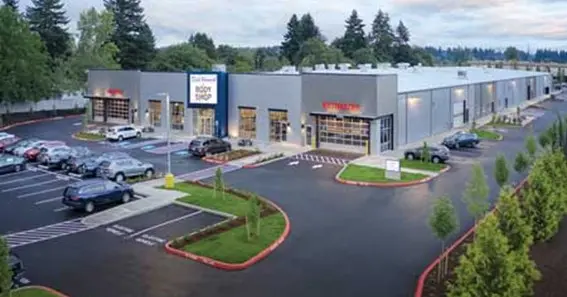Alberta, the breathtaking province known for its stunning landscapes, diverse industries, and extreme climate, faces unique challenges when it comes to energy efficiency. Harsh winters and scorching summers demand innovative solutions to keep buildings comfortable while minimizing energy consumption. One such solution that has gained popularity in recent years is steel buildings. This article explores how steel buildings Alberta enhance energy efficiency in the structures, focusing on key aspects that make them a sustainable choice for the province.
Insulation and Temperature Regulation
Steel Buildings: A Smart Choice for the Climate
The extreme climate requires buildings to be well-insulated to maintain a comfortable interior temperature. These buildings excel in this regard due to their exceptional insulating properties. The steel panels used in construction provide an effective barrier against temperature extremes, reducing the need for excessive heating or cooling.
Year-Round Comfort
Steel structures help maintain consistent indoor temperatures year-round. They are quick to warm up in winter and remain cool in the summer, significantly reducing the energy required for climate control. This translates to lower energy bills and a smaller carbon footprint.
Also Read N: 7 Things To Consider When Building A Mobile App
Sustainable Construction Materials
Environmentally Friendly Choice
Steel is a highly sustainable building material. It is recyclable, which means that construction waste is minimized. Additionally, using steel reduces the demand for timber, which plays a crucial role in preserving the forests. Opting for these buildings promotes responsible construction practices.
Also Read P: A Beginner’S Guide To Cryptocurrency Trading Strategies
Longevity and Durability
Built to Last
One of the remarkable features of these buildings is their longevity. These structures can withstand harshest weather conditions, from heavy snow loads to strong winds. Steel durability means fewer repairs and replacements, reducing resource consumption and environmental impact.
Energy-Efficient Design
Innovative Design Principles
These buildings are designed with energy efficiency in mind. Modern construction techniques allow for precision engineering, resulting in airtight structures that minimize heat loss. Additionally, these buildings can easily accommodate advanced energy-efficient technologies, such as solar panels and energy-efficient HVAC systems.
Reduced Maintenance Costs
These buildings’ low maintenance requirements save money and contribute to their long-term energy efficiency. Minimal upkeep means less disruption and fewer resources expended on repairs and renovations.
Natural Lighting and Ventilation
Optimizing Natural Resources
These buildings can be designed to maximize natural lighting and ventilation. Large windows, skylights, and efficient ventilation systems ensure that occupants can rely on natural resources for lighting and fresh air. This reduces the need for artificial lighting and mechanical ventilation, cutting energy consumption.
Conclusion
In the quest for energy efficiency, steel buildings in Alberta emerge as a compelling solution. Their exceptional insulation properties, sustainable materials, durability, and energy-efficient design principles make them ideal for the province’s diverse climate. By opting for steel structures, Albertans can reduce energy consumption, lower their environmental impact, and enjoy comfortable, cost-effective buildings that stand the test of time.
As the province continues to embrace sustainable practices, these buildings are poised to play a vital role in the province’s greener future. With their ability to withstand the rigors of the climate while minimizing energy demands, these buildings are not just a construction choice but a commitment to a more sustainable, energy-efficient future for the province and its residents.






